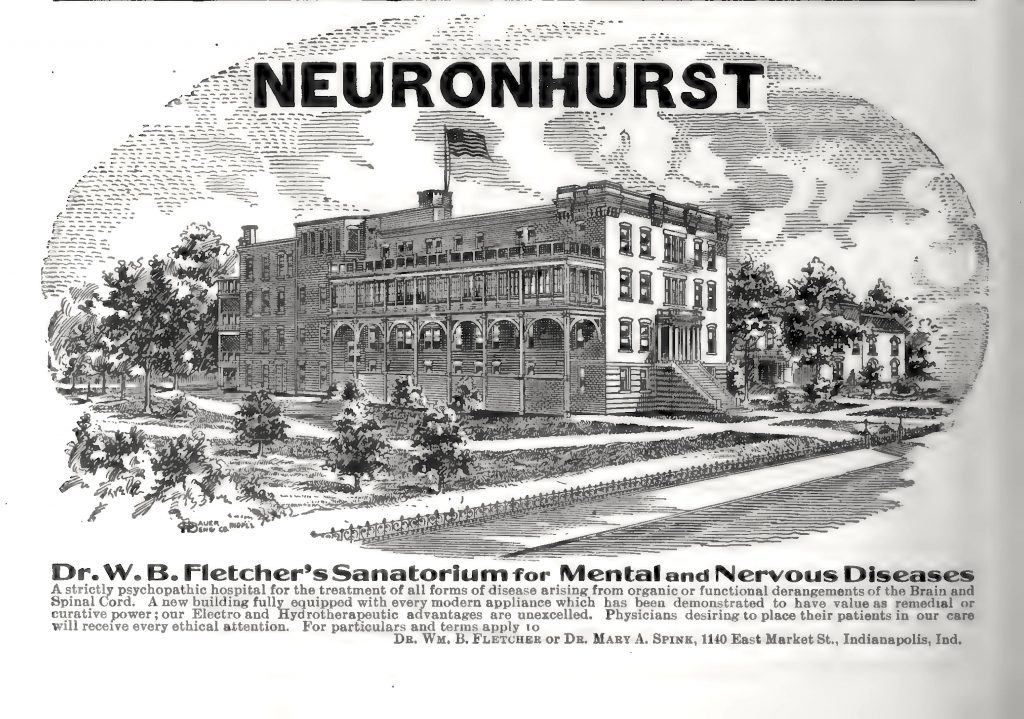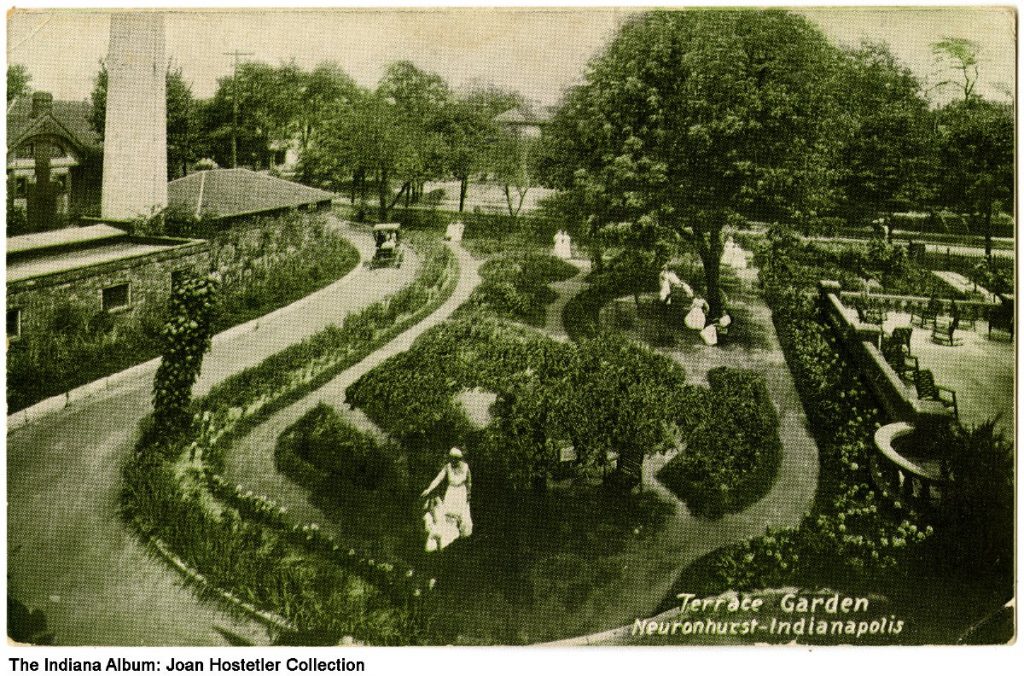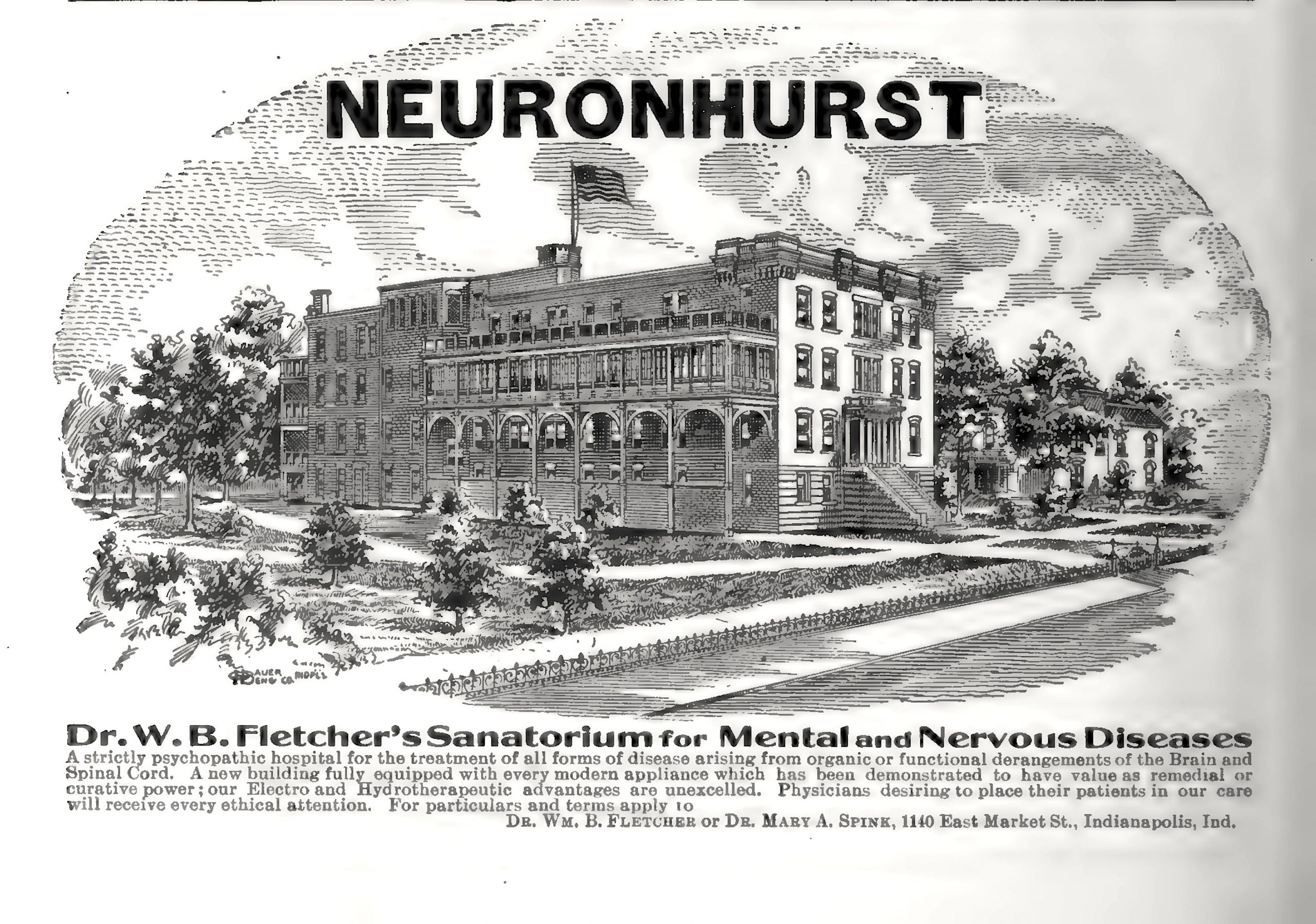In 1888 Dr. William Fletcher, son of Indianapolis pioneer opened W. B. Fletcher’s Sanitorium (later renamed Neuronhurst), the first private facility for the treatment of nervous and mental diseases in Indiana. Fletcher immediately hired , MD as his business partner. Known nationally, the hospital provided respite from the stresses of business and daily life, as well as treatment for more severe afflictions such as paralysis, and drug and alcohol addiction.
The sanatorium had at least three different locations, the first at Pennsylvania and North Streets (1888), then on Alabama Street (ca. 1890s), and a third at Market Street and Highland Avenue (1901).

Fletcher and Spink expanded the sanatorium after purchasing the large Second Empire-style residence of State Senator Ostermeyer on the northwest corner of E. Market Street and N. Highland Avenue in June 1901. The expanded site served as the women’s sanatorium. A few years later, the doctors started a nurse training school at 126 N. Highland Avenue, north of the expansion. The first annual commencement of nurses graduating from Neuronhurst’s training school took place in June 1905.
Around 1903 Neuronhurst expanded to the east of the hospital. Spink’s brother, served as the facility’s construction manager. The new psychopathic hospital and sanatorium, a three-story brick building with a basement and well-equipped laboratory, had room for up to 50 voluntary and committed patients. The kitchen staff prepared meals, and doctors and nurses provided close supervision with minimal restraint of patients. Neuronhurst’s amenities included a gymnasium and swimming pool for exercise. Patients had access to numerous types of modern therapies such as massages and baths–saline, Turkish, steam, light ray, and ozone baths. When not engaged in therapies, patients could use the gardens and solarium for fresh air and sunshine.

When Fletcher died in 1907 Spink assumed directorship of Neuronhurst. Spink pioneered the way women in Indiana practiced medicine. Her sister, Urbana Spink, a graduate of the Woman’s Medical College in Philadelphia joined Neuronhurst’s staff as a neuropsychiatrist. The Spinks’ mother Rosanna Morgan Spink helped manage the nursing staff.
By 1930 Neuronhurst boasted 16 employees, including 3 physicians and 8 nurses. Despite this success, the hospital was forced to shut down within the decade due to a dwindling patient count resulting from the as well as the death of Mary Spink in 1939.
The Medical Health Center Hospital used Neuronhurst’s buildings in the 1940s. The city demolished the structures in the 1950s.
FURTHER READING
- Hostetler, Joan. “Then and Now: Dr. William Baldwin Fletcher’s Sanatorium ‘Neuronhurst’ 1140 E. Market Street.” Historic Indianapolis, November 10, 2011. https://historicindianapolis.com/then-and-now-dr-william-baldwin-fletchers-sanitorium-neuronhurst-1140-e-market-street/.
CITE THIS ENTRY
APA:
Verderame, J. (2024). Neuronhurst. Encyclopedia of Indianapolis. Retrieved Jan 2, 2026, from https://indyencyclopedia.org/neuronhurst/.
MLA:
Verderame, Jyoti A. “Neuronhurst.” Encyclopedia of Indianapolis, 2024, https://indyencyclopedia.org/neuronhurst/. Accessed 2 Jan 2026.
Chicago:
Verderame, Jyoti A. “Neuronhurst.” Encyclopedia of Indianapolis, 2024. Accessed Jan 2, 2026. https://indyencyclopedia.org/neuronhurst/.

Help improve this entry
Contribute information, offer corrections, suggest images.
You can also recommend new entries related to this topic.
